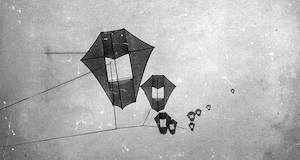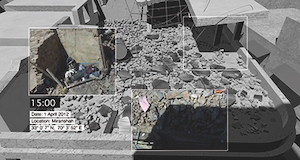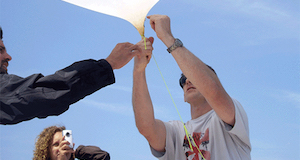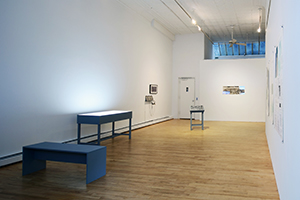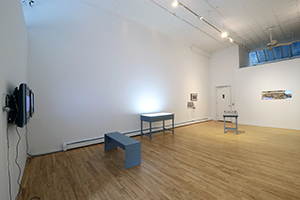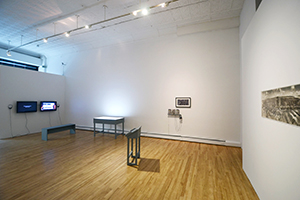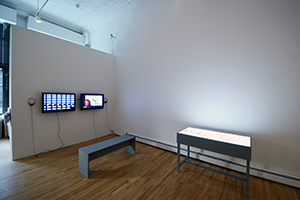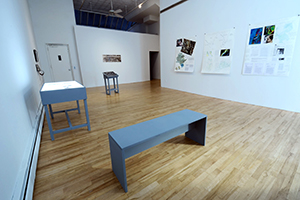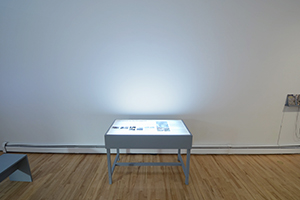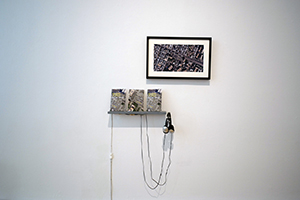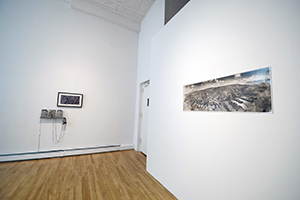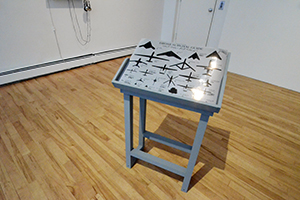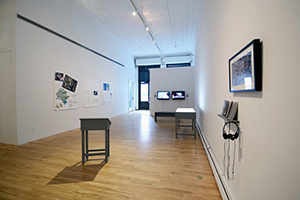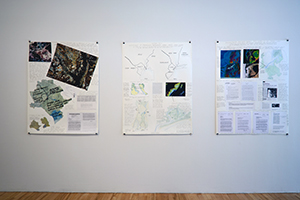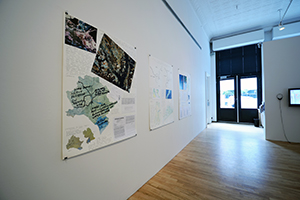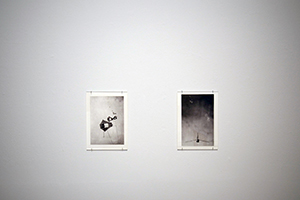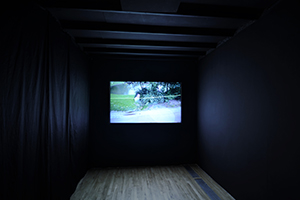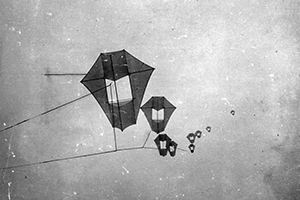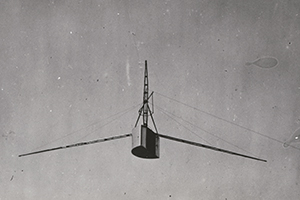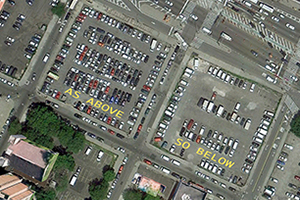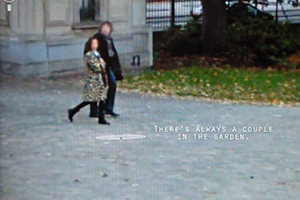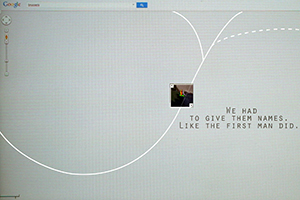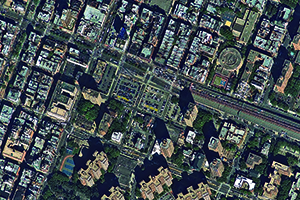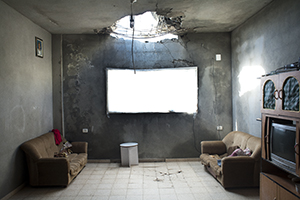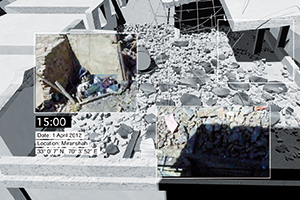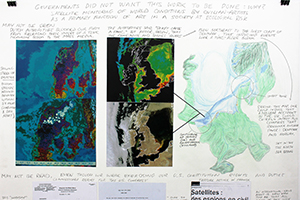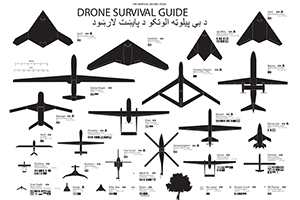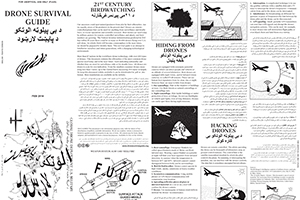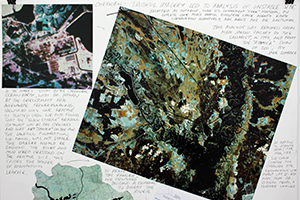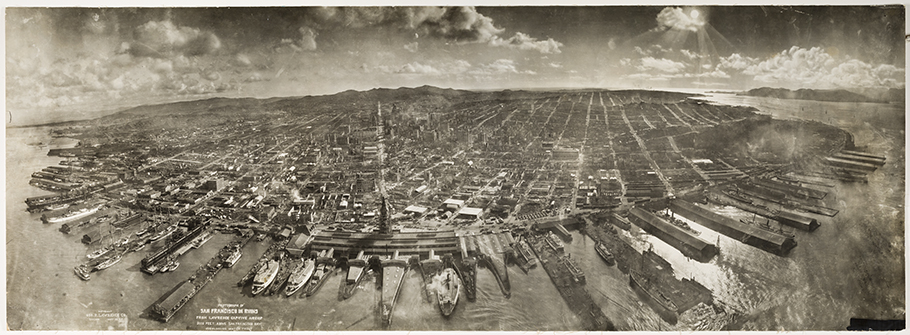In recent years, more and more artists and activists are re-appropriating aerial perspectives of power and
control to develop a new language of ethics and aesthetics. Deploying advanced technologies while
developing DIY strategies of documentation and analysis, they look for new ways to transform the aerial
point of view from a "space of state control," historically linked to the disciplinary gaze of the nation-state,
into a tool for the production and distribution of civil knowledge. These artists and activists manipulate
satellite images, operate un-militarized drones, and actualize new mapping systems in a search for civiloriented visual and political imagery.
The exhibition Decolonized Skies presents five international artists who explore the ramifications of the "democratization of the view from above." While some artists focus on the new visuality produced by this process, others underline its empowering potential in the field of human rights and participatory knowledge production. The exhibition also marks a genealogy of artistic engagement with the demilitarization of the aerial point of view and frames the current discourse in an historical context. By doing so, it explores what it takes to decolonize the view from above, and how we can produce a new visual and ethical perspective by actively reclaiming the sky.
The exhibition Decolonized Skies presents five international artists who explore the ramifications of the "democratization of the view from above." While some artists focus on the new visuality produced by this process, others underline its empowering potential in the field of human rights and participatory knowledge production. The exhibition also marks a genealogy of artistic engagement with the demilitarization of the aerial point of view and frames the current discourse in an historical context. By doing so, it explores what it takes to decolonize the view from above, and how we can produce a new visual and ethical perspective by actively reclaiming the sky.
High&Low Bureau is a curatorial duo composed of Yael Messer and Gilad Reich. Based in Amsterdam and Tel-Aviv, they curate exhibitions, film programs, performative events, and publications. The Bureau’s practice is dedicated to the exploration of artistic strategies that reflect on, and suggest alternatives to, specific social-political conditions. Recent projects: Our Work is Never Over, Matadero Art Center, Madrid (2012); Time/Resistance, The Israeli Center for Digital Art (2013); and Am I Not a Citizen? Barbarism, Civic Awakening and the City (The 13th Istanbul Biennial Film Program, 2013). The duo is the recipient of the Mondriaan Fonds Cultural Mediator subsidy (2013) and was invited to curatorial residencies in art centers such as Bar Barcelona (2013), CCA Warsaw (2013), and Para-Site Hong Kong (2014).
Yael Messer is an independent curator. She holds a postgraduate diploma in curating from Goldsmith College, London, and participated in the de Appel Curatorial Program, Amsterdam. She has been collaborating with museums, institutions, and independent art spaces internationally. In 2013 Messer was the Research Curator for the 13th Istanbul Biennial.?
Gilad Reich is a writer, curator, and a PhD candidate in the Gender Studies department at Ben Gurion University, Israel. His main field of research is representations of gender in post-Fordist societies. He has published numerous articles as well as exhibition texts and essays.
Yael Messer is an independent curator. She holds a postgraduate diploma in curating from Goldsmith College, London, and participated in the de Appel Curatorial Program, Amsterdam. She has been collaborating with museums, institutions, and independent art spaces internationally. In 2013 Messer was the Research Curator for the 13th Istanbul Biennial.?
Gilad Reich is a writer, curator, and a PhD candidate in the Gender Studies department at Ben Gurion University, Israel. His main field of research is representations of gender in post-Fordist societies. He has published numerous articles as well as exhibition texts and essays.



